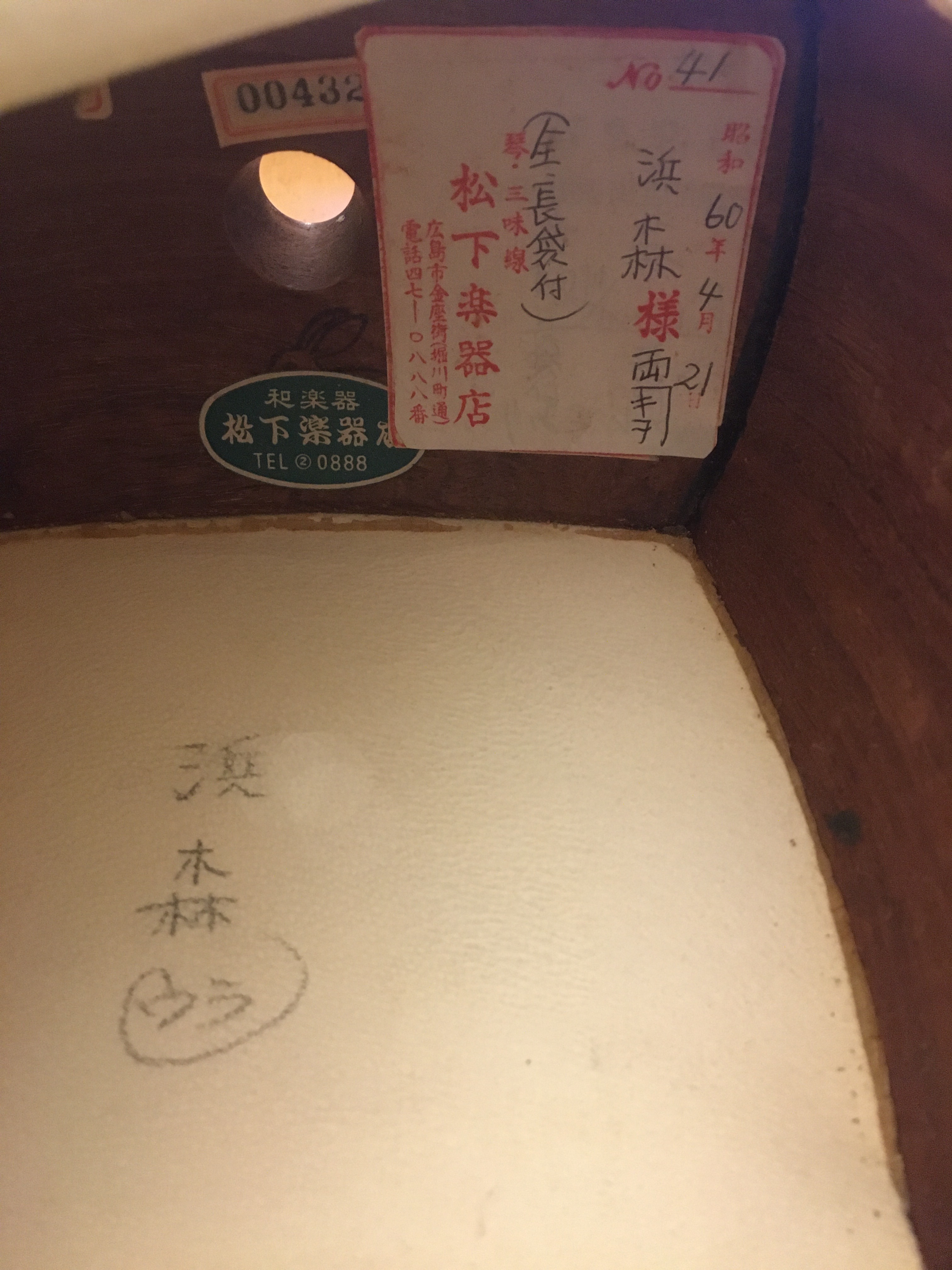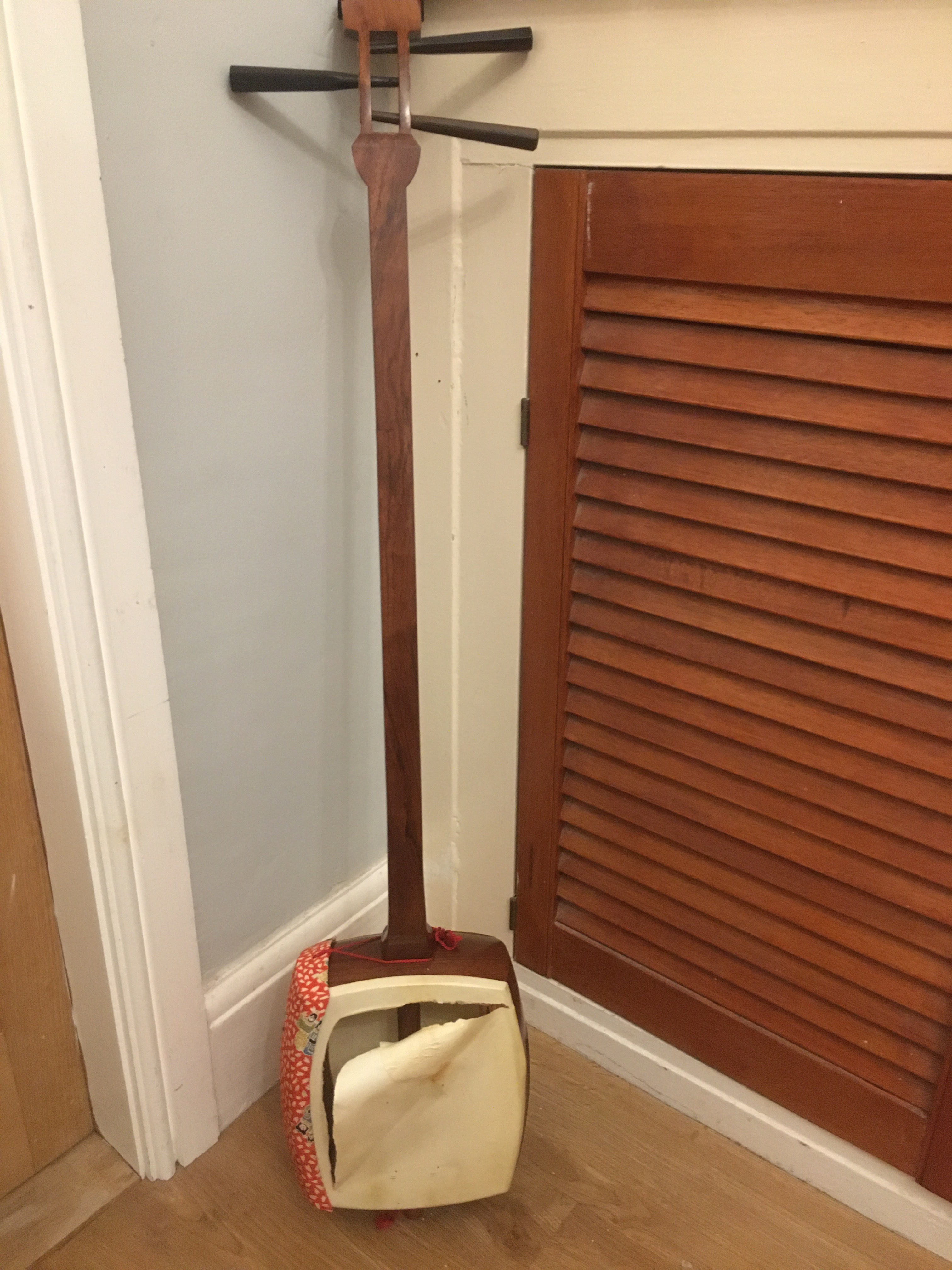Hi folks
before I attempt repairing anything ,I would like to Identify what I have .
From the labels inside I can see what I presume is a date 1960 .
The neck joints seem good and tight and the same where it joins the body
the body is 210mm long x 190 wide x 90 deep
so
Would I be right in saying that this is a Nagauta style shamisen the neck is 26mm wide and 30mm deep .
Thanks
Rich

